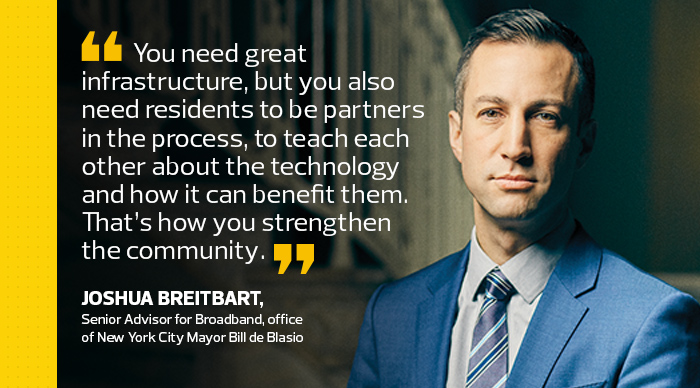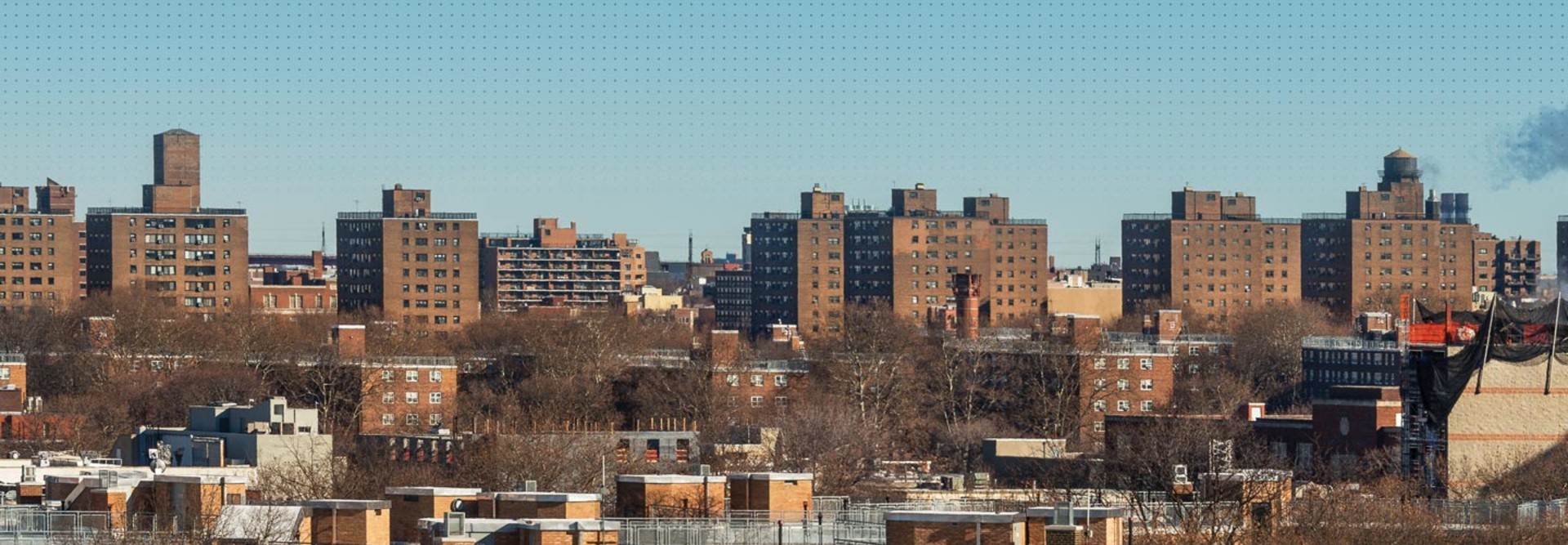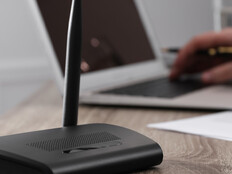Free Broadband Creates New Opportunities for Cities and Low-Income Residents
How do you make your city a leader in the 21st century economy? Ensure that all residents have a fast internet connection and the freedom to innovate.
That’s the reasoning behind New York City’s $10 million initiative to bring high-speed internet to the city’s poorest citizens, starting with those who reside at Queensbridge North and South, which together make up the largest public housing development in the nation.
All told, Queensbridge houses more than 6,500 residents, spreading over six city blocks in the borough of Queens. Before the end of 2017, each of the 3,147 households in the complex will have access to a 25-megabit-per-second Wi-Fi connection, absolutely free of charge.
Queensbridge represents a giant first step toward connecting New York’s 400,000 public housing residents to 21st century internet, but the city has even loftier goals, says Joshua Breitbart, senior adviser for broadband in the office of Mayor Bill de Blasio.
“New York has a number of commercial fiber providers, but they’re all focused on lower Manhattan,” he says. “With the city providing them thousands of anchor tenants, it creates an opportunity to get that infrastructure to the other boroughs.”
The improved infrastructure could then attract new, high-tech businesses to New York’s lower-income neighborhoods, spurring economic growth, Breitbart says.
“We think of Queensbridge as a center of excellence, one we can use to start building the totally connected city we are aiming for,” he adds.
Connecting More Low-Income Communities
While New York may be the biggest major metropolitan area to wire public housing, it’s hardly the only one. The city is among 28 pilot communities nationwide participating in ConnectHome, a public-private partnership launched in July 2015 by the U.S. Department of Housing and Urban Development (HUD).
Rei R. Onishi, a senior policy adviser in HUD’s Office of Public and Indian Housing who leads the partnership, says ConnectHome fills a need in low-income communities.
“High-speed internet access is essential to connect Americans to opportunity in the 21st century, but many Americans of modest means remain on the wrong side of the digital divide,” he says.
Although projects like ConnectHome make steady progress toward closing that divide, they’re only one piece of the puzzle.
Sylvia Blanco, executive vice president of the Housing Authority of the City of Austin (HACA) in Texas, whose Unlocking the Connection program helped inspire ConnectHome, says digital inclusion requires a “three-legged stool” approach, one that supports connections, devices and digital literacy.

Photo by Matthew Furman
Bridging the Device Gap
While many public housing residents own smartphones, notebooks and gaming consoles, those devices are far from universal. Different communities have come up with creative solutions to bridge the gadget gap, ensuring broadband-access programs don’t prove futile.
The city of Austin, for instance, works with Austin Community College to refurbish recycled machines and distribute them to residents who have completed a certain number of digital literacy classes, says Catherine Crago, head of strategic initiatives and resource development for HACA; the city also supplies devices to individuals who assist other residents with their digital needs.
In Kansas City, Mo., where more than 800 public housing units receive free 1-gigabyte Google Fiber connections, a partnership between Google and nonprofit Surplus Exchange provides refurbished devices to residents at significantly lower costs, says Rachel Merlo, community impact manager for Google.
And according to Jacob Brace, another Google community impact manager, the Provo City Housing Authority in Utah loans Google Chromebooks to low-income residents who receive free Google Fiber connections.
In these and other Google Fiber cities, Google also provides lab space and “access lounges,” where residents can ask questions and get up to speed on the technology, Merlo says.
With Wi-Fi Connectivity Comes a Need for Resident Trust
Although internet access and device availability represent major challenges, resident distrust is the first hurdle that many cities must tackle in closing the digital divide.
“We have a landlord-tenant relationship with these families, which can be challenging,” says Kelvin Patterson, IT administrator for Kansas City’s housing authority. “In many cases, they thought we were trying to spy on them by putting boxes in their homes. We had to get them all involved and build different relationships with them.”
HACA’s Crago says Austin hired residents as “digital ambassadors” to win community buy-in for the city’s Google Fiber project, which brought broadband access to roughly one-third of Austin’s 1,838 public housing units. Ambassadors receive stipends for assisting instructors with digital literacy classes, recruiting new students, and helping other residents learn to use parental controls or earn money online safely, she adds.
New York’s Breitbart says this type of peer teaching component is important for program success.
“People tend to think of broadband as a technical process, but it’s also a social process,” he says. “You need great infrastructure, but you also need residents to be partners in the process, to teach each other about the technology and how it can benefit them. That’s how you strengthen the community.”
In connected communities, low-income children can complete schoolwork at home, rather than in school libraries, says HUD’s Onishi. High school students can fill out college applications, adults can go back to school or apply for jobs, and seniors can stay in touch with their families. Eventually, public housing residents can emerge from poverty and become self-sufficient, Onishi adds.
“We knew there was a problem with these families not having internet access, but it was more than that — the internet is a way of life,” Kansas City’s Patterson says. “If people don’t have that, it’s almost like air: Without it, life comes to a stop.”









